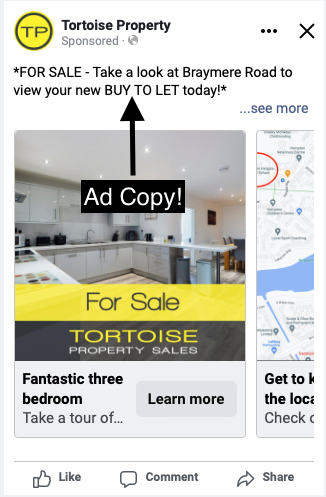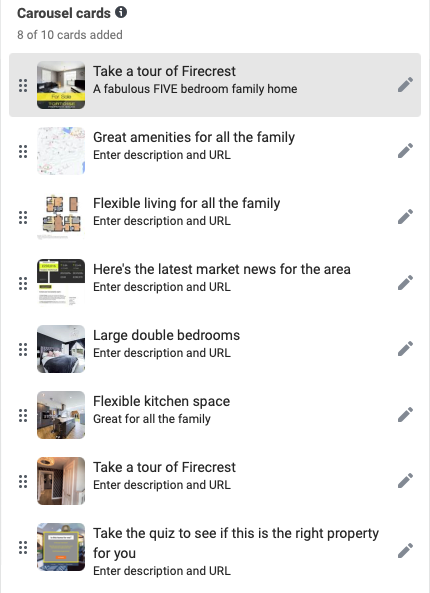
Hello everyone, I’m Sam. I’m new to Tortoise Property and Estate Agency. I have a BA Honours Degree in Marketing from Sheffield Hallam University and wanted to find somewhere that I can put that to use, which is why I’ve ended up here!
This blog will be a weekly series of me recounting my experiences, explaining why great marketing is so powerful when selling your home and the exciting plans I have for the future of marketing in Estate Agency. I believe this will be beneficial to me as I write down everything I do and hopefully will be to you also, as I do my best to explain Tortoise Property, convey our difference and answer any estate agency questions that anyone may have.
- An online valuation of your home in 60 seconds!
- Personal assessment of your home with Tortoise Property!
- Are we the right Estate Agent for you? Take the quiz!
- Connect and stay up to date with all things Tortoise!
Welcome to Episode 4!
Continuing on with the theme of last week’s blog, today we’re taking a look at the structured marketing section of our Phased Marketing Model. Let’s get started.
What is it?
Good question! Our structured marketing is designed to introduce your home to both the active and passive buyer markets. Active buyers are already searching the portals and the clever algorithm’s engage with these people straight away. However, passive buyers include those who have never thought about moving to another location in the UK, who will only move to a property of their dreams and who feel frustrated with their current home normally have not started the process of looking for a new place to live. So, we determine the most likely demographics of people who are going to want to buy your house, and we strategically use Facebook, Instagram and Google advertising to utilise the artificial intelligence and algorithm’s within these platforms to connect with buyers who are most likely to be interested in your home.
How does the AI work?
To explain this fully we need to dive into things like the ad copy and what’s actually part of our content. I’ll do my best to explain this without being too technical and sounding too much like Don, our Tech Wizard! (Sorry Don).
Ad Copy:
Ad copy is so important with ads. The simple way to explain it is the text you see on the ad (below is an example). This contributes to the AI algorithm as the platform its on (so let’s take Facebook for an example) understands the words that are written in the ad and consequently knows who to target with it. This helps us reach the buyer who is most suited to you.

What makes up our ad?
What actually makes up our ads? We include our buyer quizzes, property market data, a ’spotlight’ with information about the area and of course our pictures and videos of your home. We want to give potential buyers as much information about your home as possible so that they can make an informed decision about whether or not to make a booking to view it. Below is an example of what our ads of Facebook look like.

Location, Location, Location!
So we’ve got our ad. Next question: where do we send it? We send our ads to three different audiences. One goes to Peterborough, another to the A1 corridor (from Potter’s Bar to Huntingdon) and the final one goes to the 23 major cities in England.
The Peterborough ad is obvious. If we can sell your house locally: we will! We show it in the event that people who currently live in Peterborough want to relocate to somewhere else in the city.
However in some cases we know that it’s more likely that a buyer will come from outside of the city, which leads us on to the other two ads.
The A1 corridor targets Potter’s Bar, Hatfield, Hitchin, Stevenage, Bedford, Cambridge, St Neots and Huntingdon as well as many other towns, market towns and villages. As I’m sure you’ve worked out from the name, we’re aiming to reach everyone who lives on the main rail line towards London King’s Cross and Euston Station. Why? Because we understand that London is a huge draw for people to work in, but is extremely expensive to live there. We therefore offer them another option; why not come and live in Peterborough with affordable housing, great Wi-Fi and a 50 minute train journey away from London when you need to visit?
The national ad campaign targeting the 23 major cities is similar. However, of course this time we’re aiming to reach people who’ve never even heard of Peterborough! Have you thought about the people who want to work in finance, banking, tech or the pharmaceutical world? Well, the two best places in the country to achieve this is London and Cambridge. We’re in a position to give access to these two cities without having for a higher cost of living that includes higher property prices.
So, to answer the question…
So, how DOES the AI work? Well, the AI takes into account all of these things we’ve discussed, the ad itself, the ad copy and the location of where we send it and learns over time who the best recipients are likely to be, before showing the ad to them. This way we reach the most likely buyers for your home and consequently give you high quality viewings of people who are seriously interested in putting down an offer on your home.
Why do we do this?
So why ALL the effort? As I discussed previously in the blog introducing the phased marketing model, we don’t see the value in just putting your home on the portals and leaving it there. We want to be proactive and try to find buyers who are likely to purchase your home. We want to appeal to both the active and passive markets as well as tailoring specific ads to appeal to only your buyers.
In addition to this we want to create ‘Confirmation Viewings’. If you read the last blog I wrote, you’ll know all about these but for those who didn’t, confirmation viewings are simply viewings that you go to where you’re already planning to make an offer. The viewing for the buyer should be a confirmation of their already existing expectations and emotions that has been created whilst exploring the online presentation, which is why we offer so much information within our ads (click here to read my OTM blog). We want to create a positive outlook on your home before they even arrive at it!
This, is #OurDifference.
To Conclude…
Thanks for taking the time to read this blog!
Looking for some next steps? These links could be useful:
- An online valuation of your home in 60 seconds!
- Personal assessment of your home with Tortoise Property!
- Are we the right Estate Agent for you? Take the quiz!
- Connect and stay up to date with all things Tortoise!
If you have any questions or topics you would like to see me discuss in the future, then please do get in touch. I’m more than happy to connect with marketers, whether you work in my industry or not, as well as industry experts who I myself could learn from. You can connect with me on LinkedIn here.
Thanks again, and I look forward to connecting.
